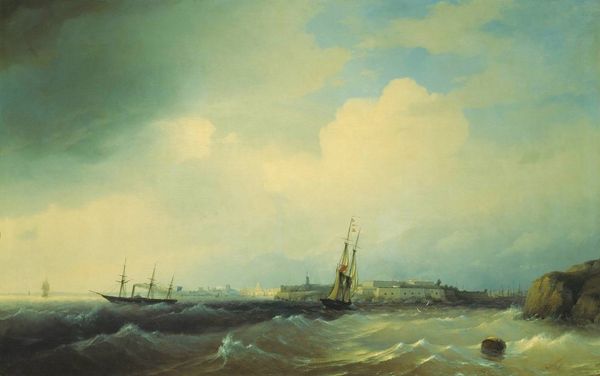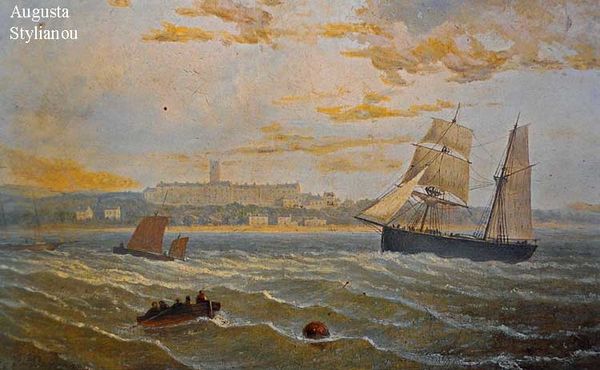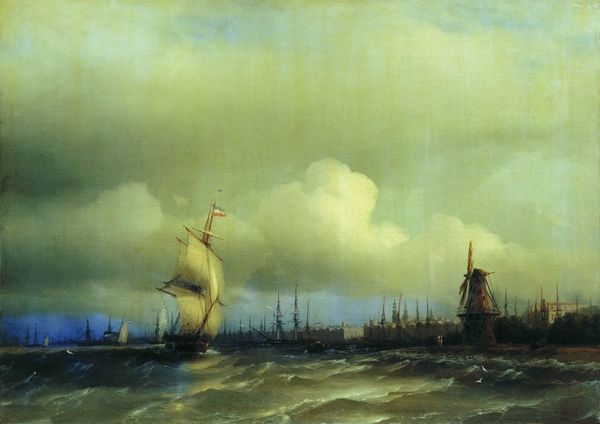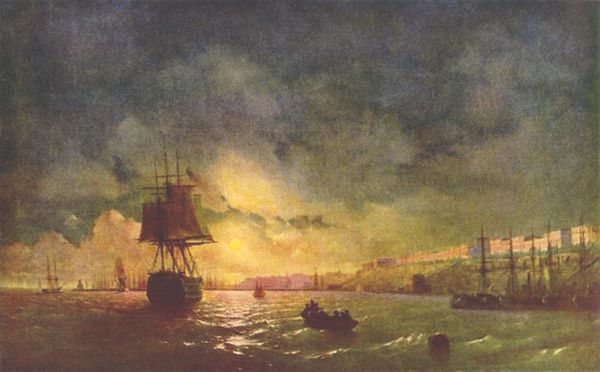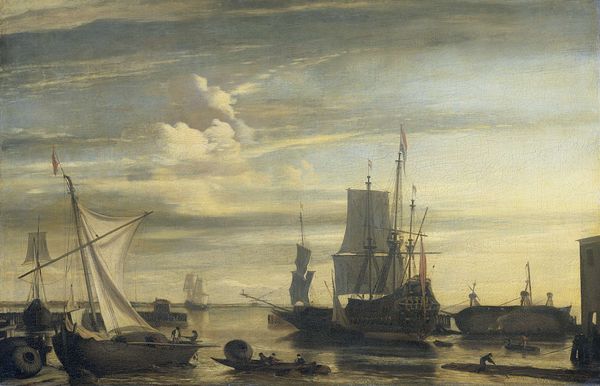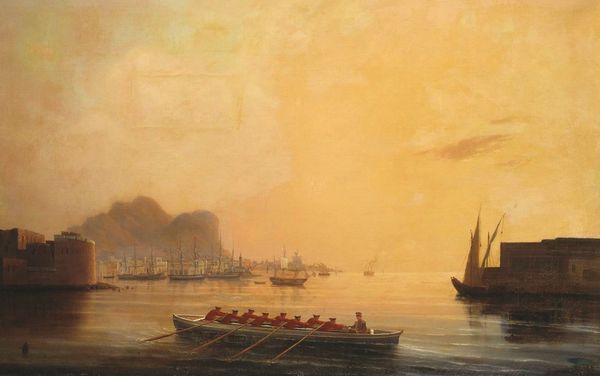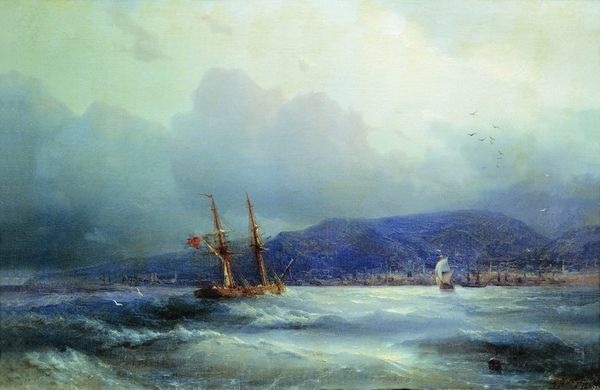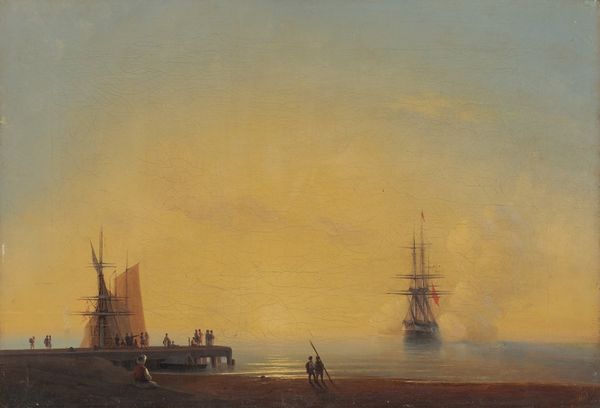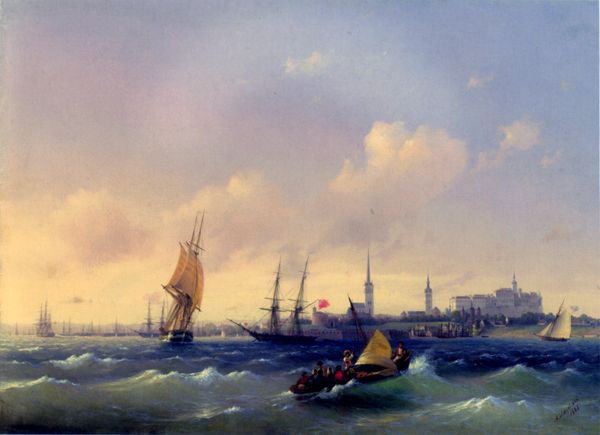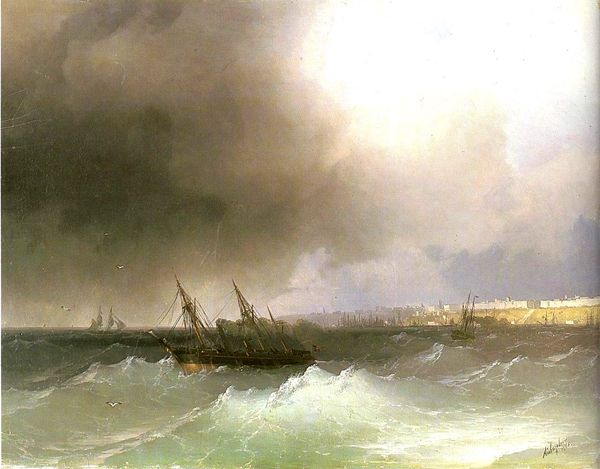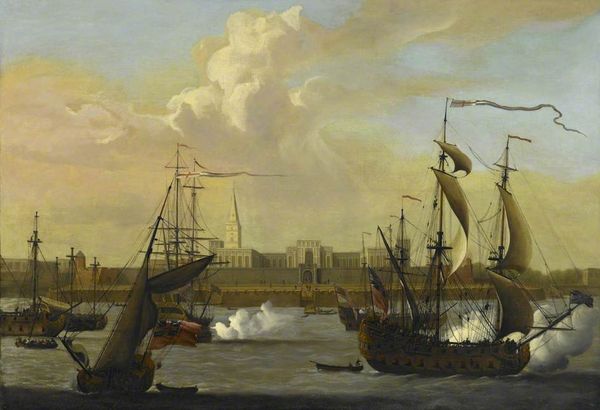
painting, oil-paint
#
boat
#
sky
#
ship
#
painting
#
oil-paint
#
landscape
#
house
#
impressionist landscape
#
form
#
oil painting
#
ocean
#
romanticism
#
seascape
#
cityscape
#
sea
#
building
Copyright: Public domain
Curator: Ivan Konstantinovich Aivazovsky's "Odessa," painted in 1840 and currently residing in the Pushkin Museum in Moscow, Russia, captures the essence of this port city. Editor: It’s striking, almost imposing. The somber sky casts a somewhat melancholic pall over the grand buildings and turbulent sea. It feels both powerful and a little ominous. Curator: Aivazovsky, a master of Romantic seascapes, often depicted the sea as both beautiful and dangerous. Odessa was, during the 19th century, a major port in the Russian Empire, a melting pot of cultures and commerce. This work speaks to Odessa’s prominence. The grand architecture reflects its importance to the empire, projecting wealth and power. Editor: The ships huddled near the shore make me consider Odessa’s socio-political landscape. As a vital trading hub, Odessa profited immensely from the import of raw materials like cotton, especially following events like the United States' secession. Its dependence on resources extracted through enslaved labor reflects the complex and often troubling economics of the era. How did Aivazovsky’s status within the Russian artistic establishment affect his depiction, I wonder? Curator: He was celebrated by the Imperial court. While he depicted dramatic storms and shipwrecks, he also catered to the desires of his patrons. The luminous sky and impressive buildings serve to reinforce a specific image of imperial grandeur, perhaps overlooking some of the less palatable aspects of its wealth accumulation. Editor: It is a visual encoding of power dynamics. Despite its artistic merit, we must confront this painting with an awareness of the historical currents—understanding that beauty can coexist with inequality and exploitation. It encourages critical thinking about whose stories get told, and whose are conspicuously absent. Curator: Absolutely. Art exists within a social context. Exploring those connections reveals richer interpretations and a greater understanding of the past. Editor: Engaging with it in this way, this somewhat imposing and melancholic cityscape, leaves us with questions not just about Aivazovsky's artistry but also the complex narratives of wealth, power, and exploitation woven into the very fabric of Odessa's history.
Comments
No comments
Be the first to comment and join the conversation on the ultimate creative platform.
